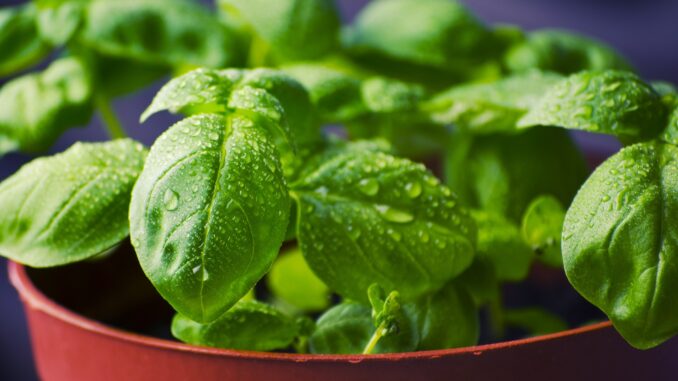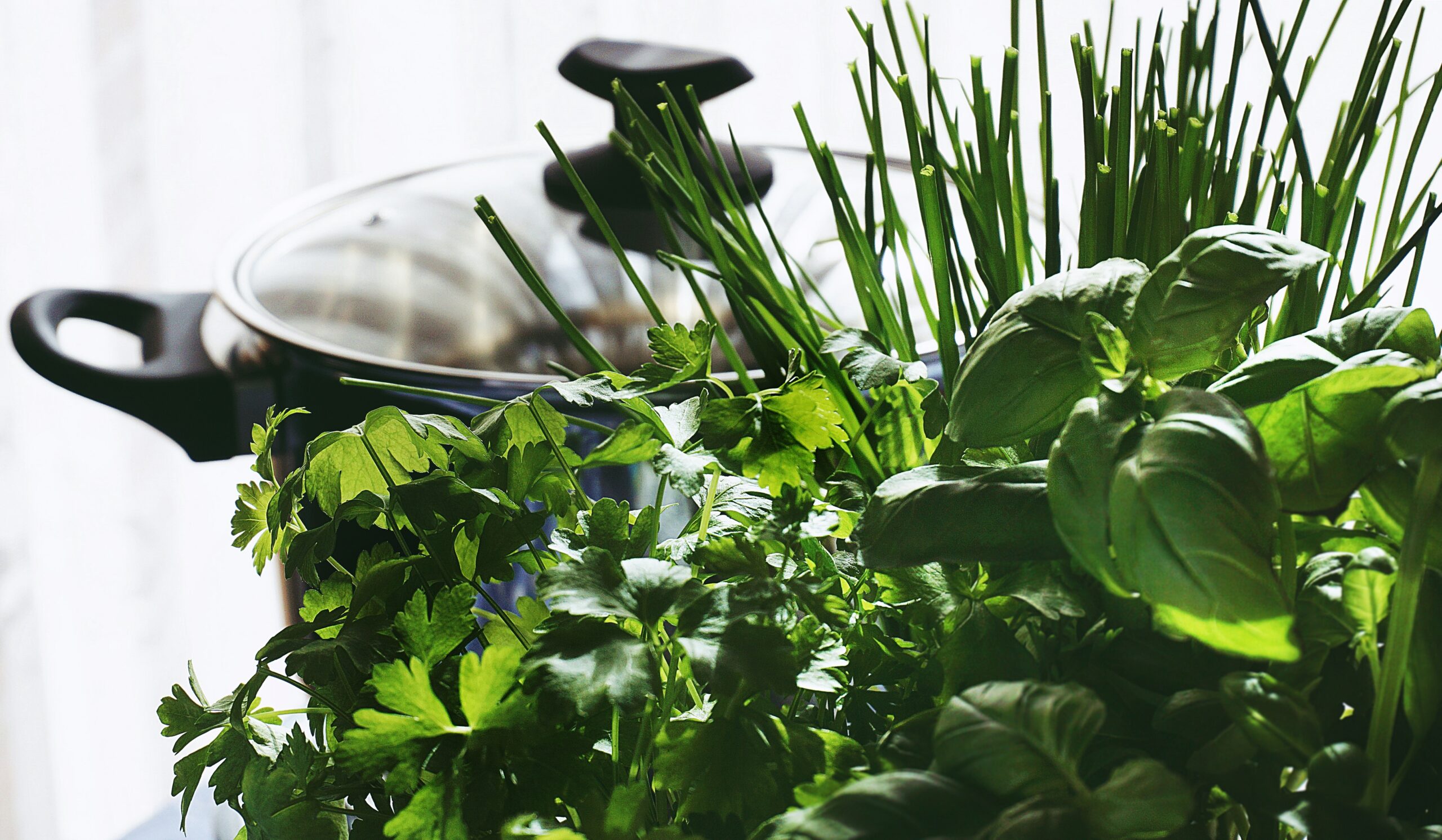

by Laurel Aiello | Fort Collins Nursery
Summer is still six months away, and if you’re itching to get back out in the garden, you aren’t alone. Many of us battle the winter blues this time of year, wishing we could spend hours outside with the sun on our backs and our hands in the dirt. But in the winter, we can still savor the bounty of our fall harvest by enjoying canned jams, salsas, and fermented foods and by roasting root vegetables stored in the pantry. We can still tend to—and cook with—the fresh herbs growing on the kitchen counter.

CREATING AN HERB GARDEN
Growing herbs indoors is a great way to satisfy our gardening desires in the wintertime, and it’s very easy to do. First, determine the right spot for your culinary herb garden, whether on a sunny windowsill or a bar top with grow lights. Herbs need as much light as they can get indoors to thrive (in the summer, they require at least six hours of direct sunlight per day outside), so place them near a south-facing window and/or set them under a full-spectrum grow light that runs for 10-14 hours per day.
Then it’s time to choose your herbs and the pots they’ll live in. Long narrow planters are great for windowsill herb gardens as long as they drain into a tray, and regular pots with drainage holes can also be used. When picking out the herbs, choose ones you’ll use because they will continue to push out new growth the more they are cut back (this also prevents them from “bolting” or going to seed). Common herbs for indoor gardens include basil, thyme, oregano, sage, rosemary, cilantro, and parsley.
Plant herb starts in their pots using regular potting soil, then water them thoroughly until you see water seeping into the tray. Herbs prefer to stay semi-moist, so check their moisture level daily and only allow the first inch of soil to dry out in between waterings. When it’s time to harvest, trim them with your pruners and use them fresh or hang them to dry for later use.
DRYING AND COOKING WITH HERBS
If drying your herbs, remove the leaves from their stems and lay them out on an herb drying screen or tightly tie the stems together at the base and hang them in a bundle upside down. The herbs will dry out in about a week and can be added to your spice rack for cooking. Fresh herbs should be used immediately, so they don’t wilt, though cilantro, parsley, and basil can usually be kept in the refrigerator for a few days with their stems in a cup of water.
No matter how you do it, cooking with homegrown herbs in the winter is fun and rewarding. Just think of all the recipes you can make without having to choose from the limited herb supply at the grocery store—basil pesto, rosemary breakfast potatoes, meats rubbed with sage, thyme, and oregano—all from the comfort of your kitchen.
Support Northern Colorado Journalism
Show your support for North Forty News by helping us produce more content. It's a kind and simple gesture that will help us continue to bring more content to you.
BONUS - Donors get a link in their receipt to sign up for our once-per-week instant text messaging alert. Get your e-copy of North Forty News the moment it is released!
Click to Donate
